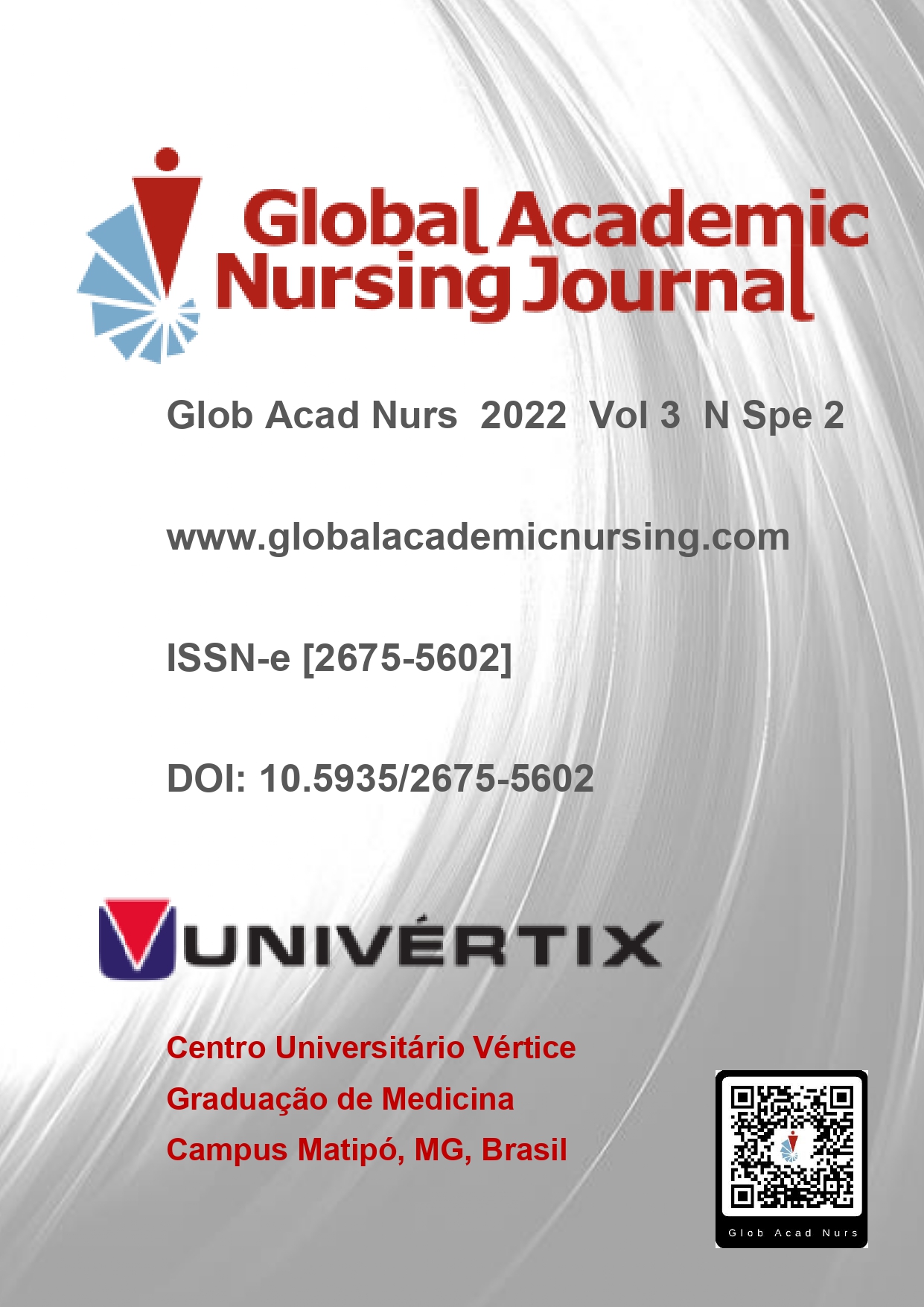Abstract
Muscle hypertrophy provides the improvement of physical aptitudes, health conditions, physical conditioning and longevity. Furthermore, alcohol consumption is a common practice in society, becoming an obstacle when individuals seek weight loss, improvement of physical or aesthetic condition. This is because alcohol consumption impairs muscle gain, as its intake breaks the balance, thus affecting homeostasis. In this context, the work aimed at alcohol consumption and vulnerabilities to hypertrophy in non-athletes. The study is a theoretical reflection of a qualitative approach, on the effects of the consumption of alcoholic beverages in the process of hypertrophy of the skeletal muscles of the human body. However, changes in habits favor the increase of lean mass, and many people who have their goals restrained by the use of alcohol seek in anabolic steroids the income that was lost in diet, metabolism or in the indisposition to practice caused by excess alcohol. Finally, moderate alcohol consumption is not an impediment to hypertrophy in non-athletes, and its use is highly prevalent in physically active individuals.
References
KraschnewskiI JL, et al. Is strength training associated with mortality benefits? A 15 year cohort study of US older adults. Preventive Medicine, Baltimore. 2016;87:121-127. DOI: 10.1016/j.ypmed.2016.02.038
Borini P, Oliveira CM, Martins MG, Guimarães RC. Padrão de uso de bebidas alcoólicas de estudantes de medicina (Marília, São Paulo) – Parte I. Jornal Brasileiro de Psiquiatria [Internet]. 1994 [acesso em 22 set 2022];43(2):93-103. Disponível em: https://pesquisa.bvsalud.org/portal/resource/pt/psi-2668
Seibel SD. Dependência de drogas. 2. ed. São Paulo: Atheneu; 2010.
Iriart JAB, Chaves JC, Orleans RG. Culto ao corpo e uso de anabolizantes entre praticantes de musculação. Cad Saúde Pública. 2009;25(4):773-82. https://doi.org/10.1590/S0102-311X2009000400008
Silva RR, Pontes LG, Oliveira GA, Assmann TC, Campos EC, Silva AA, Souza MVL. Avaliação dos fatores de risco e diagnóstico para neuropatia autonômica cardíaca em pessoas diabéticas. Glob Acad Nurs. 2021;2(Spe.3):e164. https://dx.doi.org/10.5935/2675-5602.20200164
Pinsky I, Silva MT. A frequency and content analysis of alcohol advertising on Brazilian television. Journal of Studies on Alcohol. 1999;60(3):349-9. DOI: 10.15288/jsa.1999.60.394
Silva A, Fonseca N, Gagliardo L. A associação da orientação nutricional ao exercício de força na hipertrofia muscular. RBNE [Internet]. 2012 [acesso em 22 set 2022];36(6):389-397. Disponível em: https://dialnet.unirioja.es/servlet/articulo?codigo=4841751
Laranjeira R, Pinsky I, Sanches M, Zaleski M, Caetano R. Alcohol use patterns among Brazilian adults. Rev Bras Psiquitr. 2010;32(3). https://doi.org/10.1590/S1516-44462009005000012
Parr E, et al. Alcohol Ingestion Impairs Maximal Post-Exercise Rates of Myofibrillar Protein Synthesis following a Single Bout of Concurrent Training. Plos One. 2014;2(9). DOI: 10.1371/journal.pone.0088384
National Collegiate Athletic Association (NCAA). Sport Science Institute. Drug policies for your health and safety [Internet]. EUA: NCAA; 2018 [acesso em 22 set 2022]. Disponível em: https://www.ncaa.org/sites/default/files/SSI201819_Drug_Policies_Brochure_20180706.PDF
Giacomelli KB, Santos PR, Nepomuceno P, Barros A. Efeitos do consumo de álcool no desempenho e recuperação do exercício físico. RBNE [Internet]. 2020 [acesso em 22 set 2022];13(82):1009-16. Disponível em: http://www.rbne.com.br/index.php/rbne/article/view/1505
Lohner JES. Sêneca. Sobre a brevidade da vida / Sobre a firmeza do sábio. São Paulo: Penguin Classics/ Companhia das Letras; 2017.
Hidalgo CM, De-La-O A, Fasoli LJ, Gahete FJA, Castillo MJ. Beer or Ethanol Effects on the Body Composition Response to HighIntensity Interval Training. The BEER-HIIT Study. Nutrients. 2019;4(11):909. DOI: 10.3390/nu11040909
American College of Sports Medicine (ACSM). O uso do álcool nos esportes. Revista Brasileira de Medicina do Esporte. 1997;3(3):89-91. DOI: 10.1590/S1517-86921997000300008
Ministério da Saúde (BR). Vigilância de Fatores de Risco E Proteção para Doenças Crônicas por Inquérito Telefônico. Brasília (DF): MS; 2019.
Souza GS, Folador N. Consumo de Álcool: Fator prejudicial para hipertrofia? Brasília. Monografia [Graduação em Nutrição] - Centro Universitário de Brasília. 2020.
Kanayama G, Hudson JI, Pope HG Jr. Long-term psychiatric and medical consequences of anabolic-androgenic steroid abuse: a looming public health concern? Drug Alcohol Depend. 2008;98(1-2):1-12. DOI: 10.1016/j.drugalcdep.2008.05.004
Rocha FL, Roque FR, Oliveira EM. Esteróides anabolizantes: mecanismos de ação e efeitos sobre o sistema cardiovascular. Mundo Saúde [Internet]. 2007 [acesso em 22 set 2022];31(4):470-7. Disponível em: https://bvsms.saude.gov.br/bvs/periodicos/mundo_saude_artigos/esteroides.pdf
Vella LD, Smith DC. Alcohol, athletic performance and recovery. Nutrients. 2010;8(2):781-789. DOI: 10.3390/nu2080781
Steiner JL, Gordon BS, Lang CH. Moderate alcohol consumption does not impair overload‐induced muscle hypertrophy and protein synthesis. Physiological reports. 2015;3(3):12333. DOI: 10.14814/phy2.12333
Brower KJ. Anabolic steroid abuse and dependence. Current psychiatry reports. 2002;5(4):377-387. DOI: 10.1007/s11920-002-0086-6
IP EJ, et al. Characteristics and behaviors of older male anabolic steroid users. Journal of pharmacy practice. 2015;5(28):450-456. https://doi.org/10.1177/0897190014527319

This work is licensed under a Creative Commons Attribution-NonCommercial-NoDerivatives 4.0 International License.
Copyright (c) 2022 Global Academic Nursing Journal

